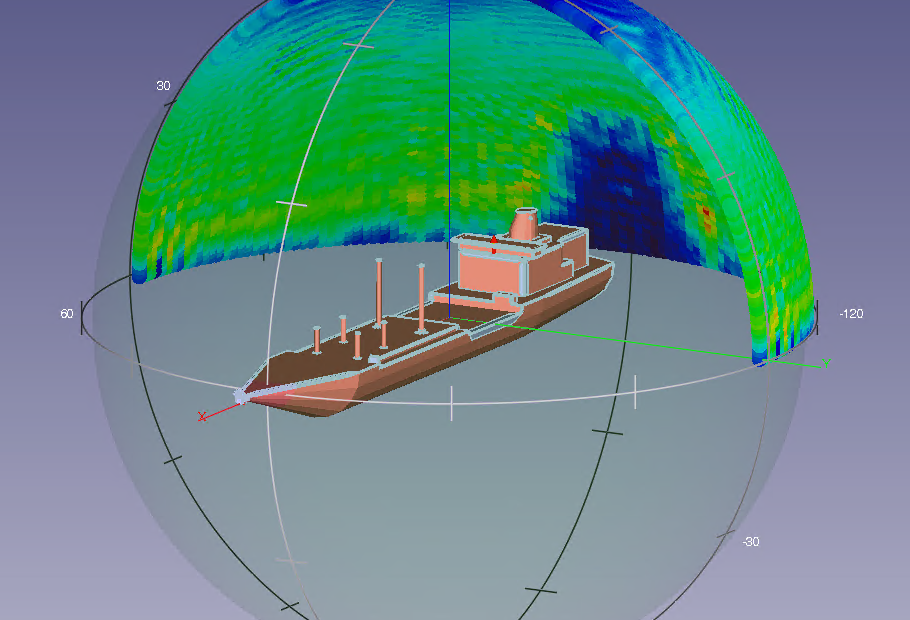[vc_row][vc_column][vc_column_text]After talking to design engineers who are responsible for both Antenna Placement and Co-site Interference simulations, we have heard that they typically desire results to be available in less than 10 minutes in order for them to effectively test all the different configurations required on a real-world project. If the simulation time grows beyond 10 minutes, then they consider that the number of design scenarios which can be analysed in a given working day becomes detrimental to their design process.
In the past, this has been problematic for companies wanting to adopt simulation technology as antenna placement type problems will typically have enormous domain sizes and the types of geometry involved can rapidly escalate the difficulty of analysis. The first example presented here involves the analysis of a 3 GHz antenna on a large ship. In wavelength terms, the total length of the ship is 1050λ x 160λ x 190λ or 32 million cubic wavelengths. The ANSYS HFSS SBR+ solver generates more than 165 million rays to analyse the impact of each part of ship on the overall radiation pattern. The total simulation time is 21 minutes and 34 seconds using 12 processing threads. Adding a NVidia Quadro P5000 GPU reduces this time down to 1 minute and 4 seconds. Thus, for an investment of just under AUD$3000 on additional hardware, the acceleration becomes 21x faster and falls well within the convenient design time window of 10 minutes.[/vc_column_text][/vc_column][/vc_row][vc_row][vc_column][vc_single_image image=”1417″ img_size=”medium” alignment=”center” onclick=”link_image”][/vc_column][/vc_row][vc_row][vc_column][vc_column_text]Consider another challenging scenario: Co-site interference analysis often involves millions or possibly billions of different combinations to check every possible channel combination required for successful operation of the communications platform. A modern vehicular system can incorporate 2G, 3G and 4G Cellular communications in addition to a pair of Wi-Fi bands and a VHF system. The simple version of this platform has more than 30 million different channel combinations but this ignores the more complex interactions. When we increase the fidelity of the system to include 2-to-1 channel interference, the number of channel combinations sky rockets to 3.4 billion possible combinations. Running on the same 12 thread machine, this simulation takes 3 hours and 21 minutes to run with just CPU computation. Adding the P5000 GPU reduces the computation time down to just 6 minutes, a 34x speedup.[/vc_column_text][/vc_column][/vc_row][vc_row][vc_column][vc_single_image image=”1418″ img_size=”full” alignment=”center” onclick=”link_image”][/vc_column][/vc_row][vc_row][vc_column][vc_column_text]In both of these high-frequency simulations, with the addition of a modern NVIDIA GPU we have demonstrated incredible gains in performance for a relatively modest investment in additional hardware, in turn bringing previously inconvenient simulations well into the domain of rapid prototyping. If you’d like further tips on speeding-up your engineering simulations with GPUs, contact your local LEAP office today.[/vc_column_text][/vc_column][/vc_row]

